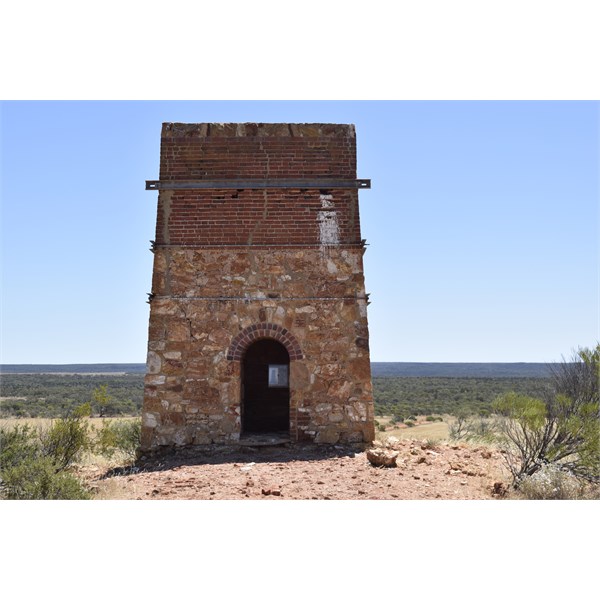Saturday, Jun 17, 2017 at 20:19
If there has been a gold roaster in the area, there will often be a substantial
chimney stack remaining.
Roasters are used to extract many other valuable minerals, as
well as gold.
Gold is found in "oxidised" ores and in "sulphide" ores. Oxidised ores extend from the surface to the shallower depths, often no more than 50-100 metres deep.
Once you have reached the limit of the oxidised ore, you are into sulphide ore - usually defined by appearance as very hard
rock or very dark blue rocks.
Oxidised ores are called "free-milling" ores. The gold is easily won by simple crushing or grinding, or both.
The gold in sulphide ores is not easily released by crushing or grinding, because it is chemically bound in with the associated sulphide-based minerals (mineral elements chemically combined with sulphur).
As a result, sulphide ores need to be roasted at high temperature to break down the sulphide elements, so the gold is released for extraction by further crushing and grinding and cyanidation.
Roasting releases free sulphur, which turns into sulphur dioxide gas when it comes into contact with air - and a tall
chimney was always deemed necessary to carry away the highly noxious and poisonous sulphur dioxide gas, which is released by roasting.
There's a fine example of an old gold roaster
chimney at the
Comet Mine, just out of
Marble Bar. The
Comet chimney is unusual, as it is steel.
It was built out of steel because the cost of transporting bricks to
Marble Bar would have been astronomical.
The biggest
chimney stack in the W.A. Goldfields is the stack at the Kambalda Nickel Smelter, 20kms South of Kalgoorlie. This is also a steel
chimney stack.
The oldest
chimney stack in W.A. is the The
Warribanno Chimney at the old Geraldine Lead
Mine, East of
Kalbarri.
This
chimney was originally 105 feet high (32M) and it was built in 1854.
The lead ore here had to be roasted to release the lead in metal form.
https://www.flickr.com/photos/railwa/8059489874https://en.wikipedia.org/wiki/Roasting_(metallurgy)
Old brickworks also had
chimney stacks to assist in firing bricks.
The abandoned Clackline Refractory, just East of Bakers
Hill, still has an excellent industrial
chimney standing.
The Clackline Refractory produced house bricks, fire bricks (one of their specialties), and gold-sampling fire-assay crucibles for over 80 years.
https://somewhere42.wordpress.com/2015/03/01/industrial-past-5/
AnswerID:
611962
Follow Up By: travlinon - Saturday, Jun 17, 2017 at 20:39
Saturday, Jun 17, 2017 at 20:39
Great information Ron. I'm heading for
Marble Bar shortly and will
check out the
chimney there. Thanks
Ken
FollowupID:
882006
Follow Up By: equinox - Saturday, Jun 17, 2017 at 21:05
Saturday, Jun 17, 2017 at 21:05

Warribanno Chimney
FollowupID:
882008